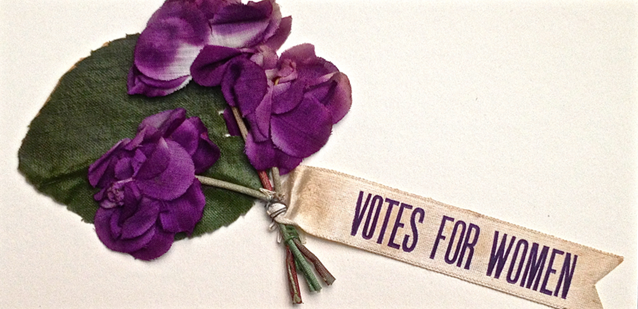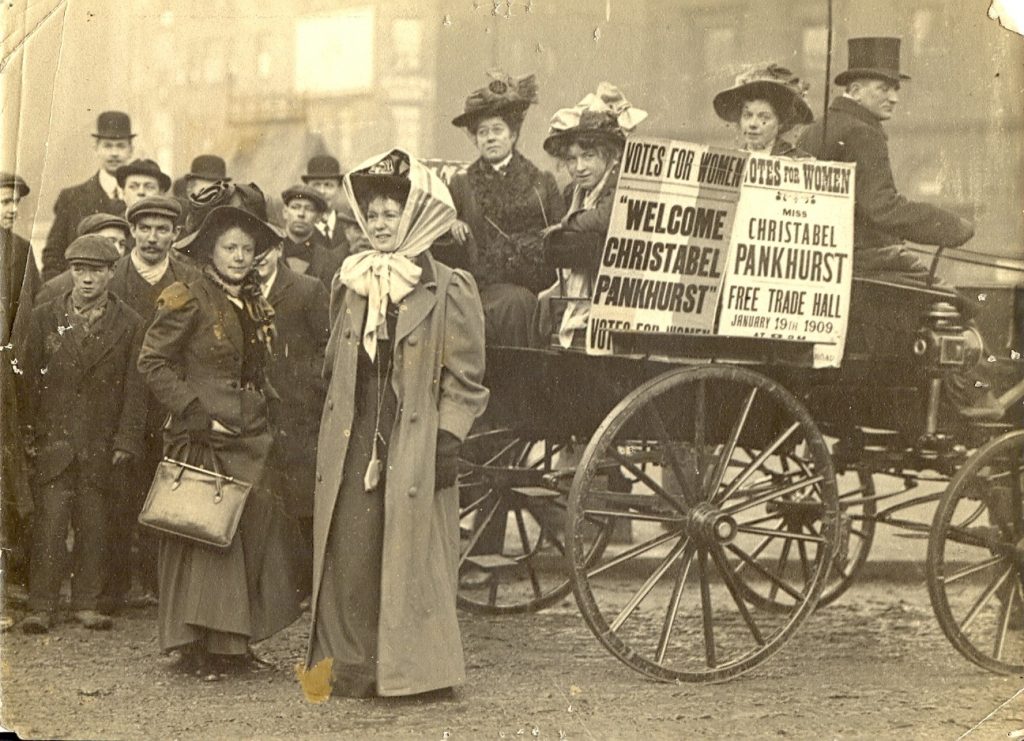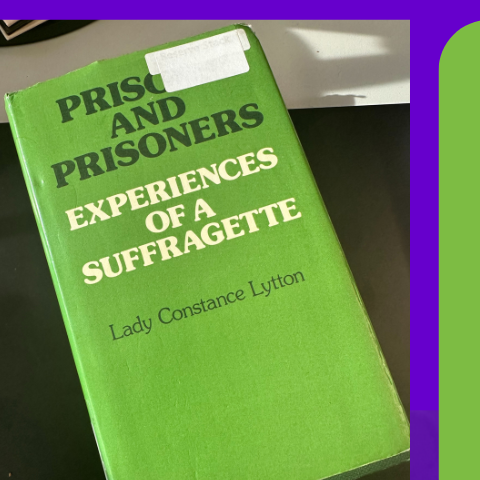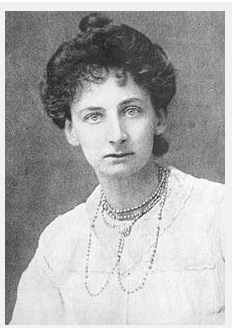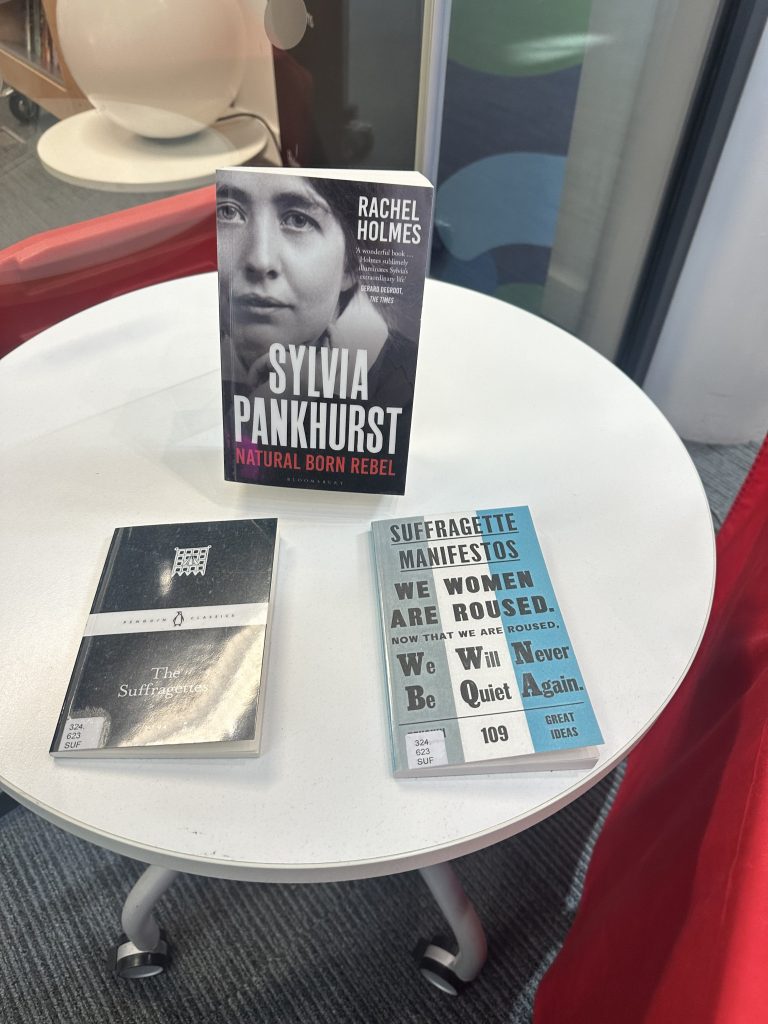International Women’s Day
International Women’s Day takes place every year on the 8th of March. The day is to celebrate the women who have fought for the rights for women, for equality and inclusion. This is the right to live within a world without bias, stereotyping and discrimination, where differences can be valued and celebrated. Every year International Women’s Day raises awareness by choosing a theme. This year’s theme is Inspire Inclusion. #InspireInclusion
International Women’s Day and the Suffragette movement.
1911 was said to be the very first International Women’s Day. The day was created in part by the collection of women around the world who had been protesting both peacefully and militantly for the right for women to have the vote.
Who were the Suffragettes?
Before 1928, not every woman had the right to vote. This meant they were not entitled to have an opinion on governmental decisions. Dates differ worldwide but this issue was not restricted to just the UK. Around the globe women were fighting for the right to be included within society.
Suffragettes were female activists who fought for the rights of women. The term ‘Suffragette‘ relates to members from the Women’s Political Social Union (WPSU). Before 1906 the term used for female activists asking for the vote was ‘Suffragists’. In 1906 a reporter for the Daily Mail coined, the term ‘Suffragette’ to distinguish between these two groups of activists. The reporter’s aim was to belittle the new militant women known as the ‘Suffragettes’ from the current women’s suffrage movement Suffragists. Suffragists had been campaigning for the vote peacefully, since 1866.
The above photo is of Suffragette, Christobel Pankhurst (centre) with her fellow suffragettes and supporters on a demonstration in Manchester and sourced by Wikimedia commons attribution: Johnny Cyprus, Public domain, via Wikimedia Commons
It was a time in history when women, whatever class, saw a different future for themselves. Women wanted to have their voices heard regarding political issues, financial and social equality and also within their own households. Women did not have any rights over their children or what happened to them if their marriage was to dissolve. It was a very difficult time to be a woman, you did not have a voice. The Suffragettes included within their campaign, ‘Deeds not Words’ as well as ‘Votes for Women’. The ‘Deeds not Words’ slogan was created by Mrs Pankhurst, leader of the WSPU and the Suffragettes, to encourage women to act in protest, rather than use words.
Magic on the shelves!
Above image found on Pixabay created by 1tamara2 under the license
Recently, Library and Learning Resources celebrated the International Women’s Day and Women’s History Month with a display. While working with the team, researching the catalogue using our trusty online friend, LibrarySearch, I found many wonderful titles sitting on our shelves waiting to be put onto lovely frames ready for the display table. While sifting through the shelves I came across a small green book, hardback, pages turning slightly brown, cover a little worse for wear. To be honest, it was to me a wonderful looking book and I’m already intrigued as to what stories await me from the pages within.
The book is titled…
Prisons and Prisoners: Experiences of a Suffragette by Lady Constance Lytton.
Image of Prisons and Prisoners: experiences of a Suffragette by Lady Constance Lytton.
Jane Warton, Spinster was edited from the title for this edition, 1976
The above photograph was taken by V Mason of the edition of the book which is held in Augustine House Library. 2024.
When turning to the title page, the book is obviously very old but has one date stamped on the date label, 1992. We do not stamp books anymore, things have moved on, but I think you get a sense of the vintage book I have in front of me. The book is the 1976 republished version but was originally published back in 1914. The original title was, ‘ Prisons and Prisoners, some personal experiences’ by Constance Lytton and Jane Warton, Spinster. Printed after the names is ‘Spinster‘. Both names in fact referring to the sole authoress’. So now this book has intrigued me even more! So many questions! First, what do I find, a diary, a personal account from one of the Suffragettes, a woman from the UK, who I know nothing about. So, who was Jane Warton? Did Lady Constance change her name to Jane? Why would Jane even need to be labelled as a Spinster after her name within a published book?
So who was Lady Constance Lytton?
Well, it has been noted in literature that Lady Constance was very influential within the campaign for the votes for women. But little had been written about her! I managed to investigate a little further via LibrarySearch.
“Lady Constance Lytton has since failed to be of interest to contemporary feminist historians” Myall, M (1998)
Her plight is noted in an article by Myall:
“Lady Constance’s actions as a suffragette were also linked to her social position as an upper-class woman, and the extent to which militancy represented an escape from the restricted life imposed upon women of this class”
Myall, M (1998)
Lady Constance Lytton was born in 1869 to a wealthy family and was the second daughter of the first Earl of Lytton. She lived a comfortable lifestyle without monetary worries until 1891 when her father, the Earl of Lytton, suddenly died which meant a considerable drop in their family income.
“Owing to bad investments Lady Lytton and her children were left in dire financial circumstance”
Myall, (2006)
Constance is quoted as saying:
“In my early girlhood I had a yearning to take up music professionally again after father’s death, when unexpected financial misfortunes caused my mother great anxiety. I had longed to try my hand at journalism and once more a few years later, I had the same ambition. But these wishes, finding no favour, had in each case eventually to be repressed.” Myall, M (2006)
Constance understood from an early age that her life was restricted due to her gender.
The book covers three years from 1908 when Lady Constance met with members of the WSPU, Mrs. Pethick Lawrence and Miss Annie Kenney. This meeting was quite by accident while staying at the Green Lady Hostel, Littlehampton. Constance comments upon the meeting:
“I realised at once that I was face to face with women of strong personality, and I felt, though at first vaguely, that they represented something more than themselves, a force greater than their own seemed behind them”
Lytton, C (1914)
During their first meeting, even though Constance was impressed by the two ladies and their ideas, she did not feel that women’s suffrage was an urgent matter. She felt there was more of a need to intervene against the prejudices towards class and the other barriers currently being portrayed in society rather than gender barriers. While joining the ladies in conversation Constance comments on the ‘ignorance falling from her own eyes’. Mrs. Pethick Lawrence was the treasurer for the WSPU, and Annie Kenney was helping run the East End of London branch. Both women were very influential figures within the new Suffragette movement. Constance exclaims:
“Nothing could have exceeded the patience, both Annie Kenney and Mrs. Lawrence endured my arguments, arguments, as I now realise without any genuine element, stereo typed and shallow”
Lytton, (1976)
Before Constance departed, both Annie and Mrs. Pethwick gave her a task:
“You are sufficiently interested in our policy to criticise it, will you be sufficiently interested to study its cause and read up on our case?”
For the next two months, Constance researched Suffrage and the role of the Suffragettes. She subscribed to the weekly paper, ‘Votes for Women’.
The book goes on to describe how Constance attended meetings which would include breakfast engagements for Suffragette women who had just been released from prison. On January 28th 1909, Lady Constance wrote to Mrs. Pethwick Lawrence offering her services, initially to take part in the next deputation to the Prime Minister at Parliament. Of course, she was welcomed into the WSPU and before long became one of the most influential members of the Suffragettes.
The deputation was to take place on 24th February 1909, and Constance went with other Suffragettes. It resulted in her imprisonment. In her diary, Constance details the violence shown to her fellow activists and notes she managed to escape herself but was held and arrested.
“Several of them had been thrown on to the ground, some kicked, one had her thumb dislocated, another a sprained ankle. One had her face streaming with blood from a blow on her nose”.
(Lytton, 1976)
The autobiography goes on to describe life in Holloway prison for Constance and her fellow Suffragettes. Below you can see Constance listed as ‘Constance Georgina Lytton’ amongst the names of the 30 women who were arrested.
Considering she was in prison, her stay was not as bad as she thought it would be. She comments that because of her name, she was treated better than some of her fellow Suffragettes. Scott, et al (2014) say,
“Constance Lytton acknowledged that her prison experience was mitigated somewhat by who she was”
Scott, et al (2014)
Question of reform
Despite the poor conditions she encountered, some improvements had been made for Constance. As she was known to the police as part of the aristocracy and her medical issues were shared with the medical staff, she escaped the mistreatment that some of her fellow Suffragettes incurred. Myall, states that
“the identification of her weak heart and the fact that she was ‘Lady’ Constance Lytton, to her dismay, she spent most of her 4-week sentence in the prison infirmary” (Myall 2006)
Lady Constance Lytton and Jane Warton, Spinster. 1908.
Photo sourced via Wikimedia commons Attribution: CONSTANCE LYTTON, AND JANE WARTON, SPINSTER, CC0, via Wikimedia Commons
Constance was already concerned with prison reform for all classes. Having now witnessed first hand unequal rights for both lower class people and women she wanted this to be known about outside the prison walls. This would also cement the case for the Suffragettes, providing evidence of mistreatment and poor conditions if you were considered to be lower down the social scale. In her book, she describes her second arrest after she threw a stone at the car Lloyd George was travelling in. She was sentenced to one month in Newcastle Prison. Whilst in prison, she was again looked after by the medical staff within the prison, and due to her weak heart was released two days earlier than the end of her sentence.
When she was released, she learnt of her fellow inmates being force fed. Constance herself, while in Newcastle Prison, actively participated in a hunger strike which all Suffragettes were now doing as part of their campaign. Again, she felt she had been released because of who she was, and this also was the reason for her not having to endure force feeding.
Constance was outraged by this! She wanted the public to be aware of the treatment the other Suffragettes were receiving.
The case for Jane Warton
So, Lady Constance Lytton came up with an idea and in her book she notes:
“I joined the WSPU again, filling up the membership card as Jane Warton”. Lytton (1976)
“I am determined to share the fate of these women” Lytton, (1976)
What you may not realise is that the Suffragettes knew that, by turning to radical acts of disorder, they would grab the newspapers’ attention. You could say these women were the very first influencers, gaining the media’s attention to attract public support in the way that Tik Tok or Instagram are used today.
For Constance, this must have been a scary prospect as she already knew some of her friends had been through this ordeal of mistreatment by means of force feeding. Still she felt that, in the name of the cause, she had to share what happened to herself and to document it becoming Jane Warton, Spinster. There is a further example of the unequal position of women in society in the 1900s. Unmarried women and those over the age where society deemed them too old to marry had to write the word ‘spinster’ after their signature at the end of their documents (spinster was the word for an unmarried woman).
Constance worked on her disguise and in her book talks about how she came up with Jane and her story behind the Warton character.
“I had my hair cut short and parted, in early Victorian fashion, in smooth bands down the side of my face”.
Constance also purchased,
“A tweed hat, long green cloth coat, a woollen scarf and woollen gloves, a white silk neck-kerchief, a pair of pince-nez spectacles, a purse, a net – bag to contain some of my papers, and my costume was complete”
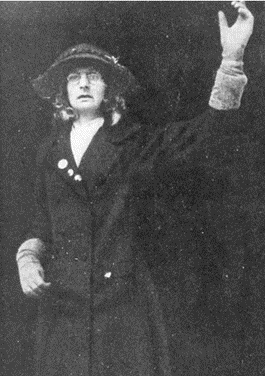
Lady Constance Lytton as Jane Warton Spinster, 1910. Sourced from Wikimedia Commons Attribution: CONSTANCE LYTTON, AND JANE WARTON, SPINSTER, Public domain, via Wikimedia Commons. You can also find this image within the book: Prisons and Prisoners authored by Constance Lytton and Jane Warton which can be located in the library. Creative commons license.
Now, as Jane Warton, her plan was in action. She met fellow activists at a meeting where she was located within the crowd and addressed the crowd saying:
“Let the men of Liverpool be the first to wipe out the stain that has been tolerated until now”.
Jane explains the need to march to the governor’s house at Liverpool Prison and the need to stop the force-feeding and the violence towards women in prisons. This causes Constance to be arrested again but this time she goes by the name Jane Warton and the police officers believe her. The book goes on to describe the daily mistreatment Jane and her fellow Suffragettes endured, including the barbaric use of force feeding. Constance was imprisoned four times, three times as Lady Constance Lytton and once as Jane Warton. After her release, she continued to support the Suffragettes and used her diary writing to gain more public support against the barbaric use of force feeding female inmates.
Lady Constance as Jane Warton and her legacy
The book is important as it comes from a first-hand account. Before reading, I had knowledge of the Suffragette movement but not of the actual individuals who fought for the right for women to vote. Constance was so brave to fight for what they believed, as did many other women at this time.
What happened to Lady Constance after her release from prison
Unfortunately, Lady Constance suffered ill health once she was released from prison and it is written that she never recovered from the force feeding she endured. She continued to support the cause by writing letters to members of parliament regarding the unfair treatment she and other women received whilst in prison. Newspapers began writing articles about her experience.
The book jacket quotes that,
“When Lady Constance ends her tale, the struggle of the Suffragettes was still unresolved, and the issue such a controversial one that the first publishers felt constrained to include in the book as a disclaimer to the effect that their views did not necessarily tally with those of Lady Constance”
The Suffragettes were still fighting, still using deeds to get people to listen, some giving their lives to the cause after this diary was published in 1914.
On the 5th of May 1912, Constance suffered a stroke at 43 years of age. Before her stroke she began writing the diary, the one which became the book I have in my hands now. After her stroke, she was determined to finish her diary but was unable to write, suffering from paralysis down the right side of her body. However, she fought on by teaching herself how to write with her left hand and finished her diary, which became “Prisons and Prisoners: experiences of a Suffragette” by Lady Constance Lytton and Jane Warton, Spinster, published in 1914. Lady Constance Lytton died in her sleep on 22nd May 1923 but her memory lives on along with that of her fellow Suffragettes, with the help of this little book which I found on the shelves at Augustine House Library.
Please take the time to vote!
An election is coming very soon and all of us must think about the women who came before us. They fought so hard, risked so much for us to be able to have the right to vote, to have a say in the way we live our lives. We also must think about the women who are still fighting in parts of the world where they do not yet have the right to vote.
When you get the polling card, it’s your right to have an opinion. Please use that vote: many before us lost so much so that we can have it.
New Books just added to the collection!
New books added to the Library Collection and discoverable via LibrarySearch
Photo taken by V Mason 2023.
References – All articles and books located via LibrarySearch and databases from the A-Z list.
Eltis, S. (2019) ‘A Class Act: Constance Lytton and the Political, literary and dramatic dynamics of suffrage prison writings’, Feminist Modern Studies, 2(1), pp.1-20.
Luparello, V.S. (2023) ‘Clara Zetkin and the Socialist Women’s International’, Critique, 51(2-3), pp. 381-397.
Myall, M. (2006) ‘only be ye strong and very courageous: the militant Suffragism of lady Constance Lytton’, Women’s History Review, 7(1), pp. 61-84.
Scott, D. et al. (2014) ‘Counterblast: 100 years on: Constance Lytton/Jane Warton Prisons and Prisoners’, The Howard Journal, 53(4), pp.428-433.
Lloyd, T. (1971) Suffragettes International: the worldwide campaign for women’s rights. 1st edn. London: BPC.
Lytton, C. (1976) Prisons and Prisoners: experiences of a suffragette. 1st edn. Wakefield: EP Publishing Limited.
Raeburn, A. (1976) The Suffragette View. 1st edn. London: Douglas David and Charles Limited.
Google Arts & Culture (2024) Suffragette. Available at: https://artsandculture.google.com/entity/suffragette/m0fgd8?hl=en (Accessed: 20 March 2024).
Historic England (2024) Women’s Suffrage – Frequently Asked Questions. Available at: https://historicengland.org.uk/research/inclusive-heritage/womens-history/suffrage/facts-and-resources/#Section6Text (Accessed: 20 March 2024).
International Women’s Day (2024) International Women’s Day. Available at: https://www.internationalwomensday.com/Activity/15586/The-history-of-IWD#:~:text=A%20woman%20named%20Clara%20Zetkin,to%20press%20for%20their%20demands(Accessed: 20 March 2024).
National Portrait Gallery (2024) Suffragettes: Deeds not words. Available at: https://www.npg.org.uk/whatson/display/2014/suffragettes-deeds-not-words/#:~:text=Founded%20in%20Manchester%20in1903%20by,of%20civil%20disobedience%20and%20vandalism. (Accessed: 20 March 2024).
The National Archives (2024) Census Boycott. Available at: https://www.nationalarchives.gov.uk/education/resources/suffragettes-on-file/census-boycott/ (Accessed: 20 March 2024).
The National Archives (2024) Lady Constance Lytton. Available at: https://www.nationalarchives.gov.uk/education/resources/suffragettes-on-file/lady-constance-lytton/ (Accessed: 20 March 2024).
The National Archives (2024) Bitter sorrow. Available at: https://www.nationalarchives.gov.uk/education/resources/suffragettes-on-file/bitter-sorrow/(Accessed: 23 March 2024).
Featured image sourced from Wikimedia commons Attribution: Historical Society of Washington, D.C., CC BY-SA 3.0 https://creativecommons.org/licenses/by-sa/3.0, via Wikimedia Commons.
 Library
Library Vicky Mason
Vicky Mason 969
969